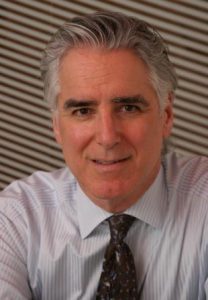Engaging Boomers in Jewish Life
This week’s post is by Stuart Himmelfarb, co-founder of B3 in New York City.
Rabbi Sid’s essay presents a thoughtful and comprehensive look at a daunting, dynamic landscape. Those  of us involved in the Jewish community, whether as volunteers or professionals, are united in our desire to strengthen Jewish life. However, we face a dizzying array of factors and, as we look around, we see the cultural landscape (not to mention the marketing and media landscape) littered with organizations and approaches that failed or are fading. It is truly painful to see a synagogue close or an organization or initiative sputter. Yet, sometimes this turn of events is inevitable.
of us involved in the Jewish community, whether as volunteers or professionals, are united in our desire to strengthen Jewish life. However, we face a dizzying array of factors and, as we look around, we see the cultural landscape (not to mention the marketing and media landscape) littered with organizations and approaches that failed or are fading. It is truly painful to see a synagogue close or an organization or initiative sputter. Yet, sometimes this turn of events is inevitable.
The ebb and flow of organizations and institutions can be said to follow the trajectory of the agricultural cycle. With each season of planting and with each harvest, some fields will thrive while others will be barren or unproductive. Even if the farmer has done everything right, there is no way to avoid the impact of a frost or an unseasonable cold snap, or a fungus, or a blight. And so, otherwise healthy, well-tended plantings can fail, overcome by environmental factors too large or too powerful for them. And then, of course, many fields, once productive, turn fallow and unproductive if not well cared for or thoughtfully managed.
It’s all in the cycle of life and so, too, can it be said of Jewish organizational life. Sometimes all is in alignment and there is energy and excitement, and fertile activity ensures. Yet, other times, the best laid plans fail due to some external factors that overcome even the best plans. Sometimes, the ground just changes underneath us and trends inhibit our success.
One example of this kind of overwhelming factor—noted in Robert Putnam’s book, Bowling Alone and elsewhere—is the decline in civic engagement, of connections to or interest in group activities. There has also been a strong aversion to institutions, a loss of faith in everything from the Congress to the local government, from organized religion to the NFL. Combine these factors with the rise of social media and the internet and you have a recipe for episodic engagement, for grazing among whatever is interesting in the moment and then moving on to the next transitory, interesting activity. These, contemporary social trends, have negatively impacted on memberships, whether in synagogues and churches or theater companies. And this is all facilitated by the, omnipresent, digital world.
As a result, recent decades have witnessed a circumstance where ongoing programs or new ventures face mounting challenges and pitfalls. My particular area of work is B3, a platform for Boomer Jewish engagement based at the NYU Robert Wagner Graduate School of Public Service. Our research assesses the challenges faced by Jewish Boomers to chart their course forward, to seek new paths to meaning and purpose, and to use the transition from midlife career and childrearing to whatever is next as an opportunity for Jewish reconnection and rebirth. We look at how people make decisions about what to do with their time and resources. And we have captured an unsettling insight: they will go elsewhere if the resources they seek are not available from Jewish sources. And that means we could be facing our last chance to capture their interest, attention and participation.
The programs we have seen or helped to create fit all four of the propositions in Rabbi Sid’s essay. Because we work at the communal level, not at the street level, we strive to encourage organizations, synagogues and agencies to seize the opportunity to engage—or re-engage—Boomers in Jewish life on many levels. As researchers, we encourage our partners to base their planning on evidence and a strong, clear sense of what their particular audience seeks. And that could be any of the four themes—community, justice, learning and sacred calling.
This is true for Boomers’ new—or renewed—interest in lifelong learning, social justice work, activism and communal endeavor, and to efforts to explore their spiritual yearnings and intimations of mortality—all of which might have been placed on hold while they pursued their careers or found themselves tied to carpools and coaching responsibilities. In our view, many Boomers now have time and resources and, as a result, they have a chance and a desire to see what else is out there for them to do. (Increased longevity adds an impetus—Boomers can count on 30+ years of activity after their mid-life pursuits so it behooves them to explore some new directions.)
One area we have particularly emphasized is significant volunteer engagement, i.e., active, challenging volunteer placements. This could be regular visits to local food banks or trips to disaster areas to build houses. We have found Boomers to be particularly interested in these kinds of volunteer activities—and, as an added bonus, when asked to bring along their children, the inter-generational potential of volunteer projects is a major added draw for them.
Thus, Jewish organizations can offer a variety of responses to Boomers emerging interests and evolving activities by creating new models of Boomer engagement.
***
Even though it wasn’t asked of us, I add an unsolicited comment on a different aspect of the chapter: its tendency to link the effectiveness of new programming to “next gen” response. Too often, the value of new programs that address these changing circumstances is often tied to how next gen responds.
B3 has long sought to address this. Foundations have said, “You are onto something but we’re only interested in next gen.” Learning programs have been targeted to 35-year-olds. Programs like Birthright Israel attract funding because they deliver meaningful experiences to Millennials.
Somehow, the assumption was made that among Boomers, those who are in will stay in…and those who are out will stay out. However, we know that in an era of episodic engagement, that’s no longer the case. There is the possibility of engagement or re-engagement in learning and leadership programs, in volunteer projects and in spiritual journeys.
So, for us, our work is focused on the four propositions but the way we measure success and target our efforts—intergenerationally, with all cohorts included—remains a challenge.
Stuart Himmelfarb is co-founder of B3, housed at NYU’s Robert F. Wagner Graduate School of Public Service. B3 is committed to Boomer engagement and changing the conversation about aging. He is also a board member of LabShul, exploring new paths to meaning.


